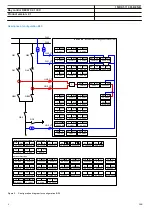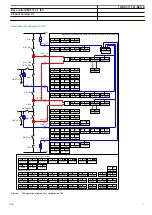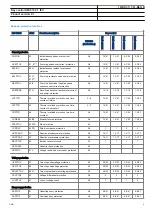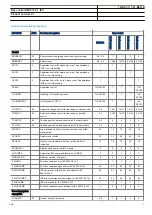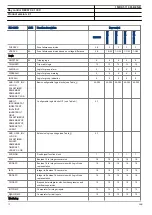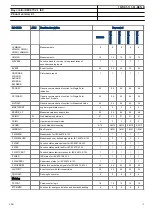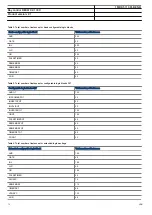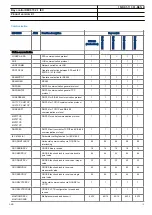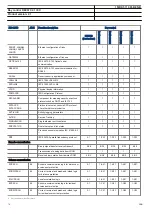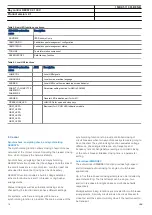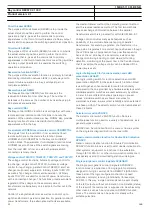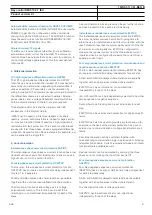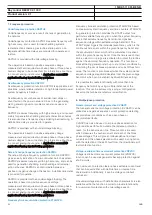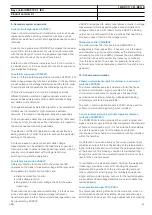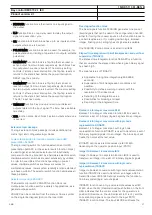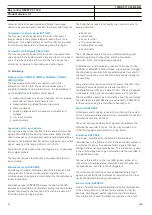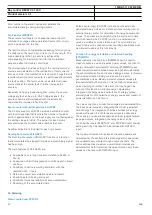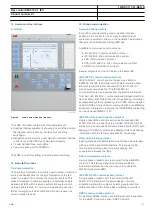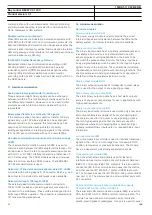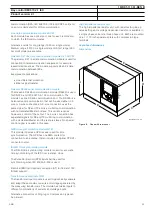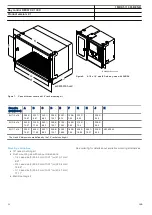
Circuit breaker SXCBR
M13489-3 v6
The purpose of Circuit breaker (SXCBR) is to provide the
actual status of positions and to perform the control
operations, that is, pass all the commands to primary
apparatuses in the form of circuit breakers via binary output
boards and to supervise the switching operation and position.
Circuit switch SXSWI
M16492-3 v6
The purpose of Circuit switch (SXSWI) function is to provide
the actual status of positions and to perform the control
operations, that is, pass all the commands to primary
apparatuses in the form of disconnectors or earthing switches
via binary output boards and to supervise the switching
operation and position.
Reservation function QCRSV
M13506-3 v4
The purpose of the reservation function is primarily to transfer
interlocking information between IEDs in a safe way and to
prevent double operation in a bay, switchyard part, or
complete substation.
Reservation input RESIN
M16501-3 v5
The Reservation input (RESIN) function receives the
reservation information from other bays. The number of
instances is the same as the number of involved bays (up to
60 instances are available).
Bay control QCBAY
M13447-3 v7
The Bay control QCBAY function is used together with Local
remote and local remote control functions to handle the
selection of the operator place per bay. QCBAY also provides
blocking functions that can be distributed to different
apparatuses within the bay.
Local remote LOCREM/Local remote control LOCREMCTRL
M17086-3 v8
The signals from the local HMI or from an external local/
remote switch are connected via the function blocks
LOCREM and LOCREMCTRL to the Bay control QCBAY
function block. The parameter
ControlMode
in function block
LOCREM is set to choose if the switch signals are coming
from the local HMI or from an external hardware switch
connected via binary inputs.
Voltage control TR1ATCC, TR8ATCC, TCMYLTC and TCLYLTC
M5864-3 v11
The voltage control functions, Automatic voltage control for
tap changer, single control TR1ATCC, Automatic voltage
control for tap changer, parallel control TR8ATCC and Tap
changer control and supervision, 6 binary inputs TCMYLTC
as well as Tap changer control and supervision, 32 binary
inputs TCLYLTC are used for control of power transformers
with a on-load tap changer. The functions provide automatic
regulation of the voltage on the secondary side of
transformers or alternatively on a load point further out in the
network.
Control of a single transformer, as well as control of up to
eight transformers in parallel is possible. For parallel control of
power transformers, three alternative methods are available,
the master-follower method, the circulating current method
and the reverse reactance method. The first two methods
require exchange of information between the parallel
transformers and this is provided for within IEC 61850-8-1.
Voltage control includes many extra features such as
possibility of to avoid simultaneous tapping of parallel
transformers, hot stand by regulation of a transformer in a
group which regulates it to a correct tap position even though
the LV CB is open, compensation for a possible capacitor
bank on the LV side bay of a transformer, extensive tap
changer monitoring including contact wear and hunting
detection, monitoring of the power flow in the transformer so
that for example, the voltage control can be blocked if the
power reverses etc.
Logic rotating switch for function selection and LHMI
presentation SLGAPC
SEMOD114908-4 v9
The logic rotating switch for function selection and LHMI
presentation SLGAPC (or the selector switch function block)
is used to get an enhanced selector switch functionality
compared to the one provided by a hardware selector switch.
Hardware selector switches are used extensively by utilities,
in order to have different functions operating on pre-set
values. Hardware switches are however sources for
maintenance issues, lower system reliability and an extended
purchase portfolio. The selector switch function eliminates all
these problems.
Selector mini switch VSGAPC
SEMOD158756-5 v7
The Selector mini switch VSGAPC function block is a
multipurpose function used for a variety of applications, as a
general purpose switch.
VSGAPC can be controlled from the menu or from a symbol
on the single line diagram (SLD) on the local HMI.
Generic communication function for Double Point indication
DPGAPC
SEMOD55850-5 v6
Generic communication function for Double Point indication
DPGAPC function block is used to send double indications to
other systems, equipment or functions in the substation
through IEC 61850-8-1 or other communication protocols. It
is especially used in the interlocking station-wide logics.
Single point generic control 8 signals SPC8GAPC
SEMOD176462-4 v8
The Single point generic control 8 signals SPC8GAPC
function block is a collection of 8 single point commands,
designed to bring in commands from REMOTE (SCADA) to
those parts of the logic configuration that do not need
extensive command receiving functionality (for example,
SCSWI). In this way, simple commands can be sent directly
to the IED outputs, without confirmation. Confirmation (status)
of the result of the commands is supposed to be achieved by
other means, such as binary inputs and SPGAPC function
blocks. The commands can be pulsed or steady with a
settable pulse time.
1MRK 511 361-BEN B
Bay control REC670 2.1 IEC
Product version: 2.1
20
ABB

